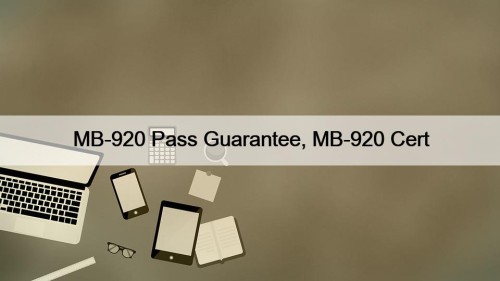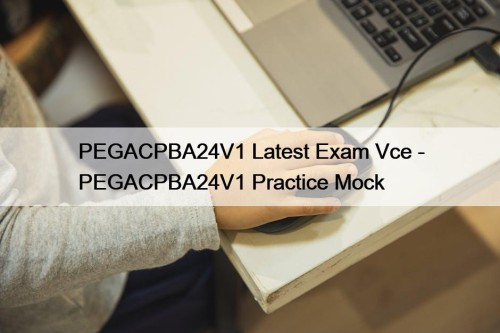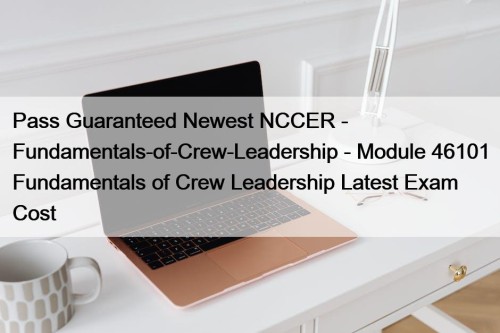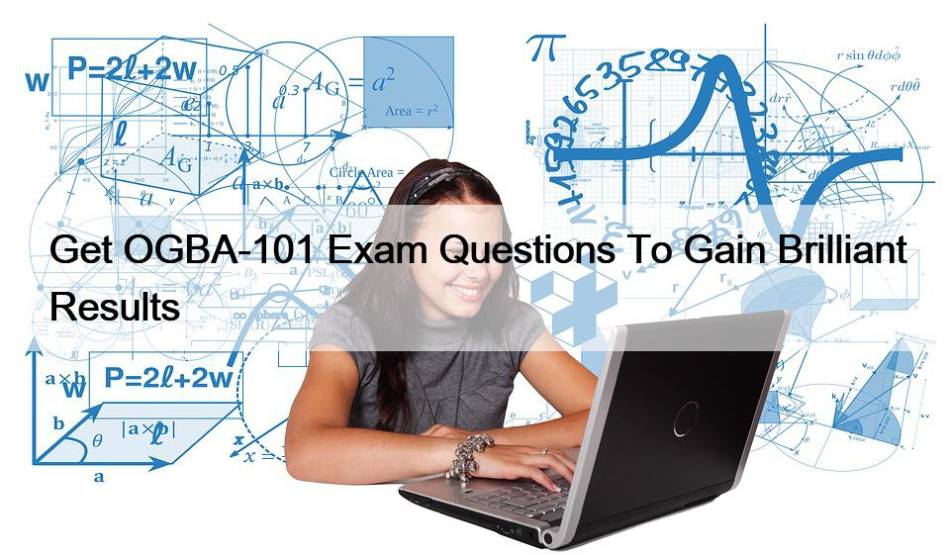Most Popular
 MB-920 Pass Guarantee, MB-920 Cert
MB-920 Pass Guarantee, MB-920 Cert
P.S. Free 2025 Microsoft MB-920 dumps are available on Google ...
 PEGACPBA24V1 Latest Exam Vce - PEGACPBA24V1 Practice Mock
PEGACPBA24V1 Latest Exam Vce - PEGACPBA24V1 Practice Mock
If you want to take the PEGACPBA24V1 exam then keep ...
 Pass Guaranteed Newest NCCER - Fundamentals-of-Crew-Leadership - Module 46101 Fundamentals of Crew Leadership Latest Exam Cost
Pass Guaranteed Newest NCCER - Fundamentals-of-Crew-Leadership - Module 46101 Fundamentals of Crew Leadership Latest Exam Cost
PassExamDumps is a legal authorized company offering the best NCCER ...



Get OGBA-101 Exam Questions To Gain Brilliant Results

With many advantages such as immediate download, simulation before the real test as well as high degree of privacy, our OGBA-101 actual exam survives all the ordeals throughout its development and remains one of the best choices for those in preparation for exams. Many people have gained good grades after using our OGBA-101 real test, so you will also enjoy the good results. Don’t hesitate any more. Time and tide wait for no man. Now that using our OGBA-101 practice materials have become an irresistible trend, why don’t you accept it with pleasure?
The ExamsLabs is committed to helping the The Open Group TOGAF Business Architecture Foundation Exam exam candidates in the certification exam preparation and success journey. To achieve this objective the ExamsLabs is offering valid, updated, and verified The Open Group OGBA-101 Exam Questions in three different formats. These three different The Open Group TOGAF Business Architecture Foundation Exam exam dumps types are The Open Group PDF Questions Links to an external site.
>> Valid OGBA-101 Test Blueprint <<
Free PDF Quiz 2025 Pass-Sure The Open Group Valid OGBA-101 Test Blueprint
The clients can download our products and use our OGBA-101 study materials immediately after they pay successfully with their credit cards. Our system will send our OGBA-101 learning prep in the form of mails to the client in 5-10 minutes after their successful payment. The mails provide the links and if only the clients click on the links they can log in our software immediately to learn our OGBA-101 Guide materials. If there are something they can't understand, they can contact with our service and we will solve them right away.
The Open Group OGBA-101 Exam Syllabus Topics:
| Topic | Details |
|---|---|
| Topic 1 |
|
| Topic 2 |
|
| Topic 3 |
|
| Topic 4 |
|
| Topic 5 |
|
| Topic 6 |
|
| Topic 7 |
|
The Open Group TOGAF Business Architecture Foundation Exam Sample Questions (Q10-Q15):
NEW QUESTION # 10
Complete the sentence. The TOGAF standard covers the development of four architecture domains. Business. Dat a. Technology and___________.
- A. Transition
- B. Application
- C. Capability
- D. Segment
Answer: B
Explanation:
The TOGAF standard covers the development of four architecture domains: Business, Data, Technology, and Application. The Application Architecture domain defines the applications required to process the data and support the business functions.
NEW QUESTION # 11
In business capability mapping, when you have documented all of the business capabilities, what should you do next?
- A. Map the business capabilities to stakeholder concerns.
- B. Identify the human and computer actors associated with each business capability.
- C. Draw up a business value assessment for each of the business capabilities.
- D. Organize the business capabilities in a logical manner.
Answer: D
Explanation:
In business capability mapping, once all business capabilities have been documented, the next step is to organize these capabilities logically. This organization helps in understanding how different capabilities interact and align with the business strategy. Here's a detailed explanation based on TOGAF principles:
Business Capability Mapping:
Business capability mapping involves identifying and documenting the capabilities required to execute the business strategy. Capabilities are the building blocks of the business, representing what the business does.
Logical Organization:
Grouping and Categorization: Capabilities should be grouped and categorized logically to reflect their relationships and dependencies. This can be done by aligning capabilities with business functions, processes, or strategic objectives.
Hierarchical Structure: Organizing capabilities into a hierarchical structure helps in visualizing how high-level capabilities decompose into more specific, detailed capabilities. This hierarchical view aids in understanding the complexity and scope of capabilities.
Alignment with Strategy: Logical organization ensures that capabilities are aligned with the business strategy and objectives. It helps in identifying which capabilities are critical for achieving strategic goals and which ones need development or improvement.
TOGAF ADM References:
Phase B: Business Architecture: This phase involves developing the business architecture, including capability mapping. Organizing capabilities logically is a key step in this process, as it helps in creating a coherent and comprehensive business architecture.
Capability Models: TOGAF recommends using capability models to represent the organization's capabilities.
These models should be logically organized to facilitate analysis and planning.
Practical Steps:
Analyze Relationships: Examine the relationships between capabilities to identify dependencies and interactions. This analysis helps in grouping related capabilities together.
Create a Capability Map: Develop a visual representation of the capabilities, organized logically. This map serves as a reference for understanding the business architecture and planning initiatives.
In summary, after documenting all business capabilities, organizing them in a logical manner is essential for creating a coherent and effective business architecture. This logical organization facilitates better analysis, planning, and alignment with business strategy.
NEW QUESTION # 12
Consider the following example value stream:
Which of the following statements is most correct?
- A. The value stream is mapped to five subsidiary value streams.
- B. The value stream consists of five sequential subprocesses.
- C. The value stream is decomposed into five value stream stages
- D. The value stream is decomposed into five sequential events.
Answer: C
Explanation:
According to the TOGAF Series Guide to Value Streams (Version 1), a value stream stage is defined as "a distinct part of a value stream that represents a group of activities contributing to an overall result" 5. A value stream stage can be expressed as a noun phrase that indicates what outcome or state is achieved by completing the stage5. For example, some possible value stream stages are "Product Ordered", "Payment Processed", or
"Customer Satisfied". The example value stream shows how an online retailer creates and delivers value for its customers by performing five value stream stages: "Acquire Retail Product", "Advertise Channels",
"Display Products", "Enable Selection", "Process Payment", and "Deliver Product(s)" 5. Therefore, the value stream is decomposed into five value stream stages.
https://pubs.opengroup.org/togaf-standard/business-architecture/value-streams.html Table 1: Acquire Retail Product Value Stream Stages
NEW QUESTION # 13
Which of the following is a difference between an organization map and an organization chart?
- A. An organization map reduces the time, cost, and risk of business operations.
- B. An organization map can be impacted by a business model change.
- C. An organization map is limited to formal relationships between business units.
- D. An organization map highlights where in the organization that stakeholder concerns are not being addressed by a business architecture.
Answer: D
Explanation:
An organization map is a technique that can be used to show how a business architecture addresses stakeholder concerns across different parts of an organization3. It can highlight gaps or overlaps in the coverage of stakeholder concerns by a business architecture. An organization chart, on the other hand, is a diagram that shows the formal structure and hierarchy of an organization, such as reporting relationships and roles4. An organization chart does not necessarily show how stakeholder concerns are addressed by a business architecture.
An organization map differs from an organization chart in that it is designed to show more than just the formal hierarchy and relationships between different units within an organization. It provides a view of the enterprise from the perspective of the business architecture, highlighting areas where stakeholder concerns might not be addressed effectively, whereas an organization chart typically shows the formal reporting structures only.
NEW QUESTION # 14
Consider the following representation of a business model:
Which of the following business models is this an example of?
- A. The Business Model Innovation factory
- B. The Four Box Framework
- C. The Business Model Cube
Answer: B
Explanation:
The provided representation of a business model appears to be a variant of the Business Model Canvas, which is a strategic management template for developing new or documenting existing business models. It is a visual chart with elements describing a firm's value proposition, infrastructure, customers, and finances. The model assists firms in aligning their activities by illustrating potential trade-offs. Since none of the options precisely match the Business Model Canvas and the Four Box Framework is conceptually closest to the Business Model Canvas, option B is the best available answer, albeit not a perfect match.
NEW QUESTION # 15
......
We regard the customer as king so we put a high emphasis on the trust of every users, therefore our security system can protect you both in payment of OGBA-101 guide braindumps and promise that your computer will not be infected during the process of payment on our OGBA-101 Study Materials. Moreover, if you end up the cooperation between us,we have the responsibility to delete your personal information on OGBA-101 exam prep. In a word, Wwe have data protection act for you to avoid information leakage!
New OGBA-101 Exam Camp: https://www.examslabs.com/TheOpenGroup/TOGAF-Business-Architecture-Foundation/best-OGBA-101-exam-dumps.html
- Valid OGBA-101 Test Blueprint | 100% Free Newest New TOGAF Business Architecture Foundation Exam Exam Camp 🤖 Easily obtain ➤ OGBA-101 ⮘ for free download through ( www.exams4collection.com ) 🤒OGBA-101 Exam Study Guide
- Reliable OGBA-101 Test Preparation 🧯 OGBA-101 Exam Flashcards 🔂 OGBA-101 Latest Exam Vce 🟡 Open website “ www.pdfvce.com ” and search for [ OGBA-101 ] for free download 👏Download OGBA-101 Free Dumps
- Detailed OGBA-101 Answers 🟪 OGBA-101 Exam Flashcards 🌒 Download OGBA-101 Free Dumps ↕ ⏩ www.pdfdumps.com ⏪ is best website to obtain ☀ OGBA-101 ️☀️ for free download 🍭Detailed OGBA-101 Answers
- Pass Guaranteed Quiz 2025 Fantastic The Open Group Valid OGBA-101 Test Blueprint 🦥 Enter 【 www.pdfvce.com 】 and search for ➠ OGBA-101 🠰 to download for free 🦕Latest OGBA-101 Test Answers
- Latest OGBA-101 Test Answers 🥐 Latest OGBA-101 Test Answers ❎ OGBA-101 Pdf Dumps 🖊 Enter [ www.testkingpdf.com ] and search for ➠ OGBA-101 🠰 to download for free 🎮Download OGBA-101 Free Dumps
- OGBA-101 Braindump Pdf 🟣 Detailed OGBA-101 Study Plan 😉 OGBA-101 Valid Test Vce 🐭 Open website ➽ www.pdfvce.com 🢪 and search for ➽ OGBA-101 🢪 for free download 🛑OGBA-101 Exam Study Guide
- Download OGBA-101 Free Dumps 🆑 OGBA-101 Braindump Pdf 💞 OGBA-101 Practice Test Pdf ↪ Open website ☀ www.real4dumps.com ️☀️ and search for ➠ OGBA-101 🠰 for free download 🦊OGBA-101 Pdf Dumps
- 365 Days Of Free Updates To The Open Group OGBA-101 Exam Questions 🚮 Download ▶ OGBA-101 ◀ for free by simply entering { www.pdfvce.com } website 🏕Detailed OGBA-101 Answers
- Pass Guaranteed 2025 High Pass-Rate The Open Group Valid OGBA-101 Test Blueprint 🚰 Search for { OGBA-101 } and download it for free on ➽ www.actual4labs.com 🢪 website 😉OGBA-101 Latest Exam Vce
- Free PDF Quiz 2025 The Open Group High Pass-Rate OGBA-101: Valid TOGAF Business Architecture Foundation Exam Test Blueprint 🤿 The page for free download of ▷ OGBA-101 ◁ on ▷ www.pdfvce.com ◁ will open immediately 🦜Download OGBA-101 Free Dumps
- Detailed OGBA-101 Answers 🍯 Dumps OGBA-101 Free Download 🚕 OGBA-101 Exam Dumps Provider 🍠 ✔ www.pass4leader.com ️✔️ is best website to obtain ▷ OGBA-101 ◁ for free download ⬇OGBA-101 Practice Test Pdf
- OGBA-101 Exam Questions
- shikhoapp.com luthfarrahman.com ibrahimformaths.com myclass.id teams.addingvalues.xyz digital-pages.uk clickandlearnhub.com motionenergy.com.tw ajnoit.com icp.douyin86.com.cn
Tags: Valid OGBA-101 Test Blueprint, New OGBA-101 Exam Camp, Regualer OGBA-101 Update, New OGBA-101 Exam Bootcamp, OGBA-101 Valid Dumps Ppt